No Project, Only Pictures
Brian Dillon · Saul Leiter
‘I always assumed I would simply be forgotten and disappear from view,’ Saul Leiter said late in life, at a time when the colour photographs he had taken half a century earlier were hardly ever off the pages of magazines, and countless online slideshows celebrated his ‘lost’ views of mid-century New York. Leiter, who died on 26 November (a week short of his 90th birthday), spent his last decade genially playing up to his new status as rediscovered colour pioneer.The mythology was forgivable but a little misleading: in his thirties, Leiter was taken up by Edward Steichen, who showed his black-and-white work at MoMA in 1953, and until the early 1980s he was a fashion photographer for magazines like Esquire and Harper’s Bazaar.
Leiter’s early colour work, however, had vanished to all but connoisseurs, and when these pictures reappeared – spectral and smeary, with most of their action going on at the edges – they seemed to say something about the near-invisibility of their maker. One of his best photographs is a multi-planed view inside a train carriage on the El; a single foot is propped on an empty wicker seat.
Leiter has been retrospectively associated with the New York School. He wasn’t included earlier in part because, unlike Robert Frank and William Klein, or later his friend Diane Arbus, he had no legendary book to bruit his style or his project. (According to Leiter, the problem was that there had not been a project, only pictures.) You can half imagine how such a book might have looked, and fitted the times: monochrome shots of children in Halloween masks, tired bus passengers and incongruous nuns recall the work of Frank, Klein and Cartier-Bresson. But already, in the late 1940s, Leiter had begun to shunt his human subjects to the corners, or smother them in black. He specialised in over-the-shoulder glimpses: a young boy in a yarmulke, dwarfed by the backs of two adults, or a woman at a party reduced to the polka dots of her dress, shining in the dark.
His obscuring tendencies continued in the colour work. Leiter used cheap film that gave his images a muted quality, and the slowness of the stock made it harder to capture the momentary dramas of the street that Klein or Cartier-Bresson could freeze in fast black and white. Technical constraints cannot, however, quite explain what Leiter did with colour and composition. Time and again in the 1950s he depicts New York under snow, with just a red umbrella or a pair of temporary stop lights to punctuate the dirty white. He used the whitewashed windows of defunct stores to silhouette the odd scurrying figure, little more than a smudge of overcoat, shopping bags or another umbrella – always umbrellas. He was a connoisseur of the effects of condensation.
At times, Leiter’s taste for glass and mirrors can make for the most flummoxing compositions; there are at least two taxis in Taxi (1956), framed by a liquor-store window, but such is the complex stagger of surfaces that it’s impossible to say just where – street or store – the bald guy with a fat cigar in the middle of the photograph is actually standing.
Leiter moved to New York from Pittsburgh in 1946, fleeing his father (a stern rabbi), set on becoming a painter. His tastes in painting leaned more towards Bonnard and Vuillard, but he seems to have learned something from the monumentality of Abstract Expressionism. In Straw Hat (1955), an oddly antique character daintily crosses the street; but he’s really no more than an orienting point for a study of blue boards above and asphalt below.
Through Boards (1957) is like one of Rothko’s Black on Maroon paintings bisected by a white car and window shoppers.
At his most extreme, Leiter fills the upper four-fifths of a photograph with a black canopy, below which twenty tiny New Yorkers are trudging through the snow, and a single red tail-light provides the only colour. Through slitted eyes, the city swells to the span of Cinemascope.
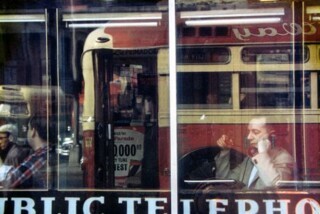
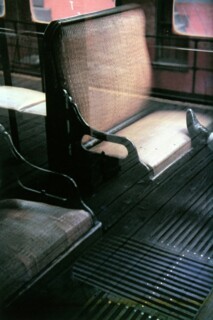
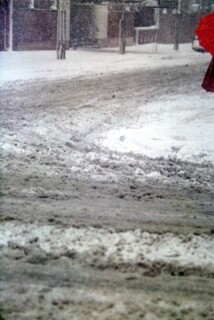
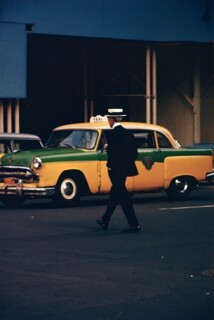
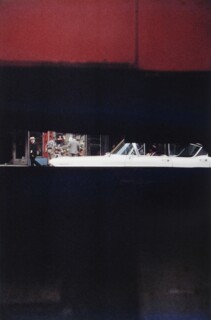
Comments
http://www.nybooks.com/books/authors/alfred-hayes/